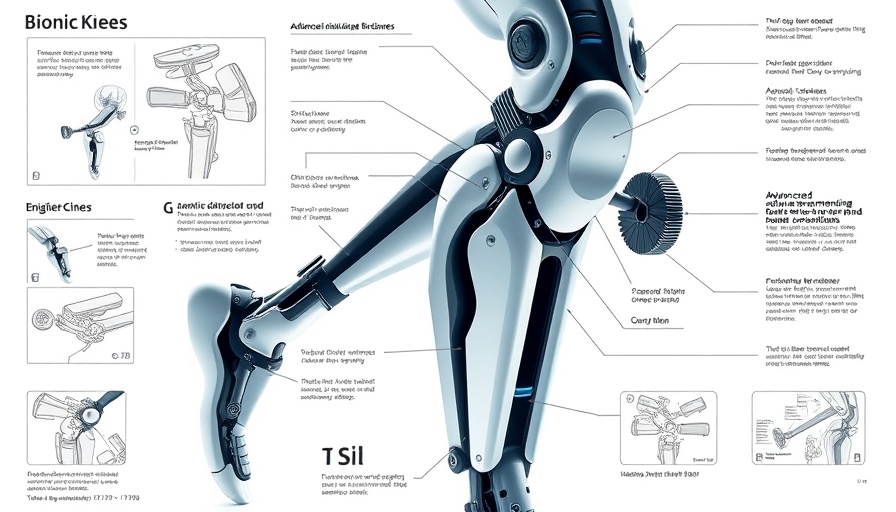
Revolutionizing Mobility: The New Era of Bionic Knees
In a groundbreaking development, researchers at the Massachusetts Institute of Technology have unveiled a tissue-integrated bionic knee that significantly enhances mobility for individuals with above-the-knee amputations. Unlike traditional prosthetics, which often utilize a socket to connect the residual limb, this innovative system directly connects to both muscle and bone tissues. This integration not only promotes greater stability but also allows the user to exert more control over their movements.
The Significance of Integration
As Hugh Herr, a prominent professor at MIT, emphasizes, this isn't just about replacing a limb; it's about creating a prosthesis that becomes an integral part of one’s body. Participants in a clinical trial reported that their bionic limbs felt much more natural compared to traditional prosthetics. This feeling of embodiment can be transformative, as it allows users to engage with their prosthesis as part of themselves, rather than as a separate entity.
Enhancing Control Through Sensory Feedback
One of the standout features of this bionic knee is its advanced control system. Over the years, Herr's lab has focused on harnessing the body's neural signals to guide movement. The new surgical technique, known as the agonist-antagonist myoneuronal interface (AMI), involves reconnecting muscle pairs surgically to maintain their natural communication. This setup facilitates real-time feedback for the wearer, enabling smoother motions and quicker responses, which are essential for navigating daily activities like walking or climbing stairs.
Clinical Evidence and Future Potential
A previous study demonstrated that individuals with below-the-knee amputations who received AMI surgery walked faster and maneuvered more effectively compared to traditional prosthetic users. The recent expansion of this technology to accommodate above-the-knee amputees marks a significant step forward in prosthetics. Herr's approach provides hope that individuals with all levels of amputations can one day experience enhanced movement and independence.
The Broader Implications for Health Tech
This innovation in bionic technology not only represents a leap in healthcare but also reflects larger trends in health tech and rehabilitation. As the focus shifts towards enhancing user experience and integrating technology with biology, the avenues for personalized medicine and prosthetic development become more promising. Such advancements pave the way for future technologies that could revolutionize not just prosthetics, but the entire field of medicine.
As we look forward to what lies ahead in the field of prosthetics and health tech, it becomes increasingly clear that the fusion of technology with our biology holds immense potential. Not just for enhancing movement, but for improving the quality of life for countless individuals.
 Add Row
Add Row  Add
Add 




Write A Comment